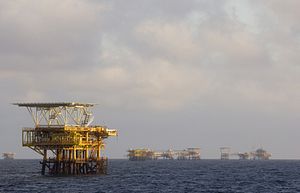It passed with barely a word. A two-day meet in Bali this week was supposed to improve relations between China and the 10 members of the Association of Southeast Asian Nations (ASEAN). It was touted widely in the Chinese-friendly press but in the end not even the sycophantic scribes of Beijing had much to say.
Senior officials were meeting on the Indonesian island as part of a joint working group to thrash out a common approach to resolving maritime disputes in the South China Sea – known as the East Sea in Vietnam and the West Philippine Sea in Manila.
But Beijing’s stance ahead of the meeting probably did not help the 11th ASEAN/China meet, which was meant to make some inroads on the much-vaunted Code of Conduct (CoC), first raised in 2002, and the Declaration on the Conduct of Parties (DoC) in the South China Sea.
“China has strictly adhered to the principle of the DoC and has exercised great restraint when facing provocation from other countries such as the Philippines and Vietnam,” Zhang Junshe, vice president of the Naval Research Institute, said ahead of the meet.
“We hope these two countries will stop the provocative actions against China.”
China’s take it or leave it approach to its territorial ambitions has hardened since it foisted an ancient claim on the United Nations five years ago through its nine-dash line, which ignores international maritime law, modern conventions, and recognition of sovereign borders.
It’s a policy, regurgitated ad nauseam by Communist Party wonks, that leaves no space for negotiations while challenging the rights of countries to unfettered access over their Exclusive Economic Zones (EEZ), which are delineated 200 nautical miles off their coasts.
Vietnam and the Philippines have been on the front lines of the dispute with their long-held claims over the Paracel and Spratly Islands. Chinese claims also encroaches onto territory viewed widely as belonging to Malaysia, Brunei and Indonesia.
Such attitudes have again put the Vietnamese and Chinese militaries on full alert after Beijing said it would deploy another four oil drilling rigs in the South China Sea off Hainan and Guangdong provinces, described by Foreign Ministry spokeswoman, Hua Chunying, as “normal activities.”
This came with the region still on tenterhooks after both countries clashed on the high seas in late May following the deployment of a rig into the Paracel Islands. Riots ensued while talks between Chinese state councilor Yang Jiechi and Phan Binh Minh, the Vietnamese deputy foreign minister, which ended in Hanoi on June 19, failed to ease tensions.
Five days later Vietnam claimed seven Chinese vessels had rammed one of its boats, badly damaging the hull, a claim rejected by Beijing, with Hua accusing the Vietnamese of breaching a security cordon.
If the additional rigs venture further south towards the Paracel Islands and again head inside Vietnam’s EEZ then further hostilities are probable.
In behaving more like a 16th century colonial power as opposed to a nation that sees itself on par with the United States, Beijing has asserted a claim over 90 percent of the seas that divide China, mainland Southeast Asia, and the rest of ASEAN, through which about half of the world’s trade passes.
Its assertion is non-negotiable, rendering any notion of a CoC, or the more juvenile DoC, hardly worth the airfares in getting the delegations to Bali. Perhaps it’s time to scrap talks all together, at least until China adopts a more realistic approach befitting of a genuine world power in the 21st century.
Luke Hunt can be followed on Twitter @lukeanthonyhunt
































